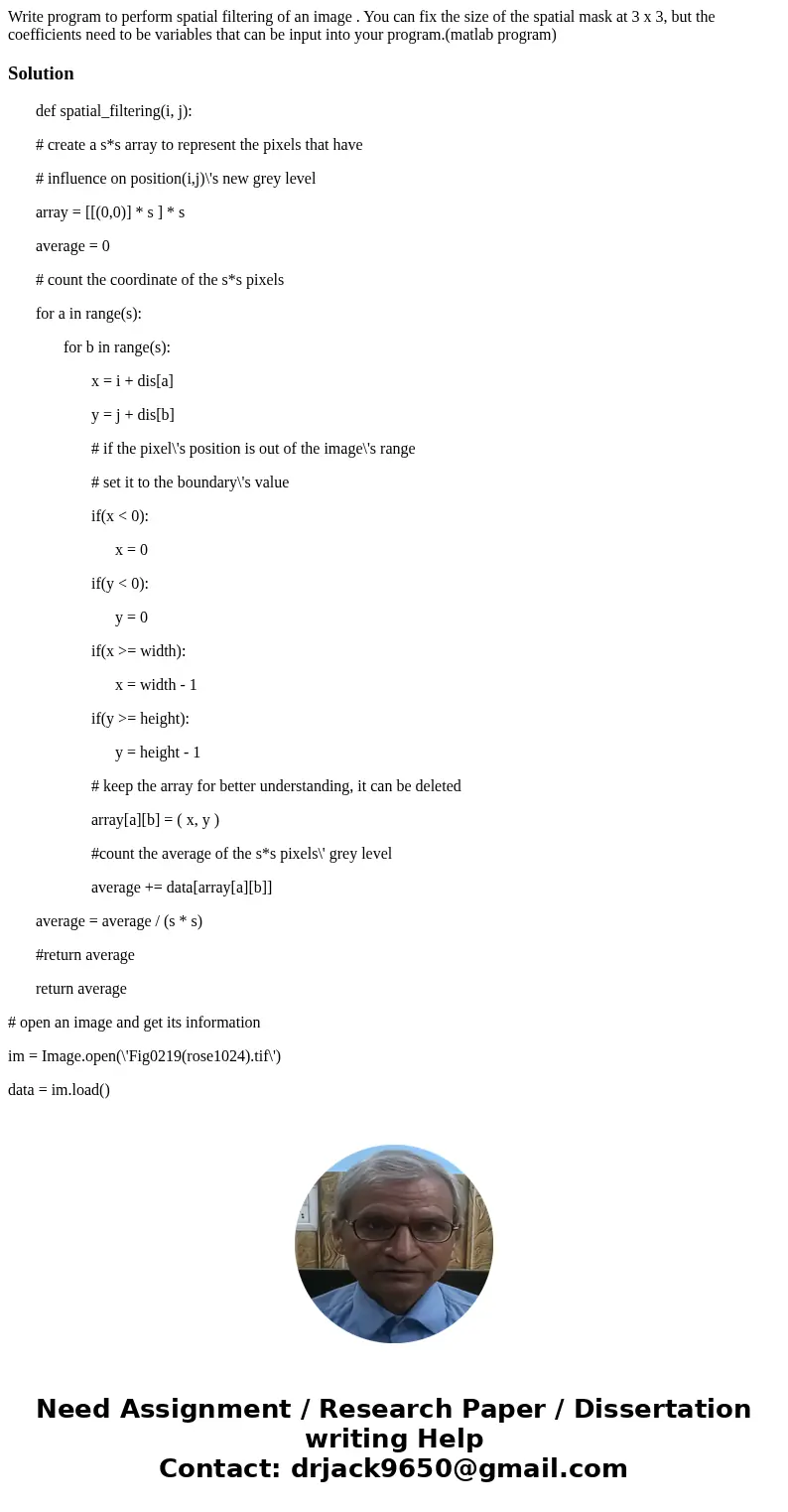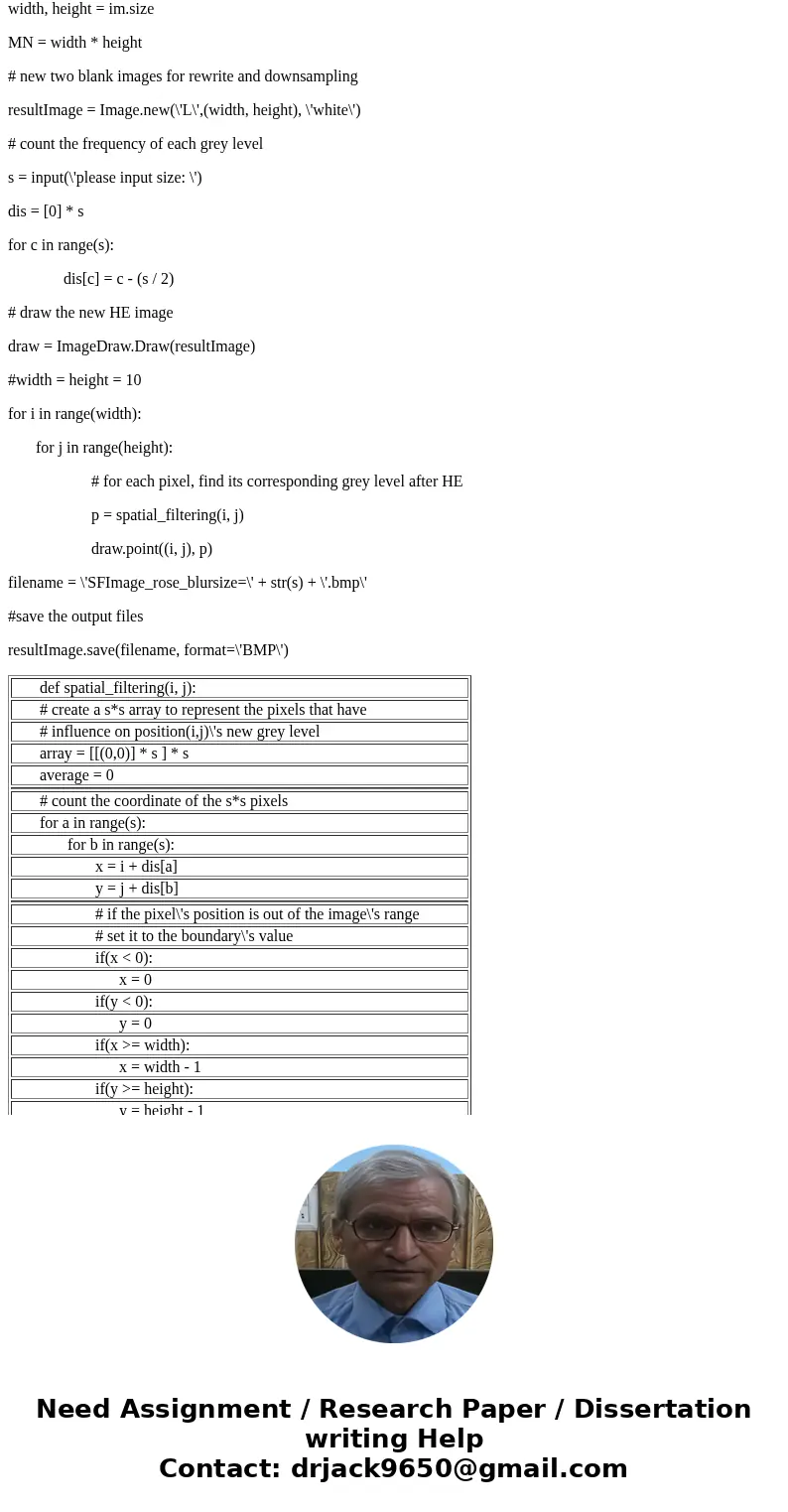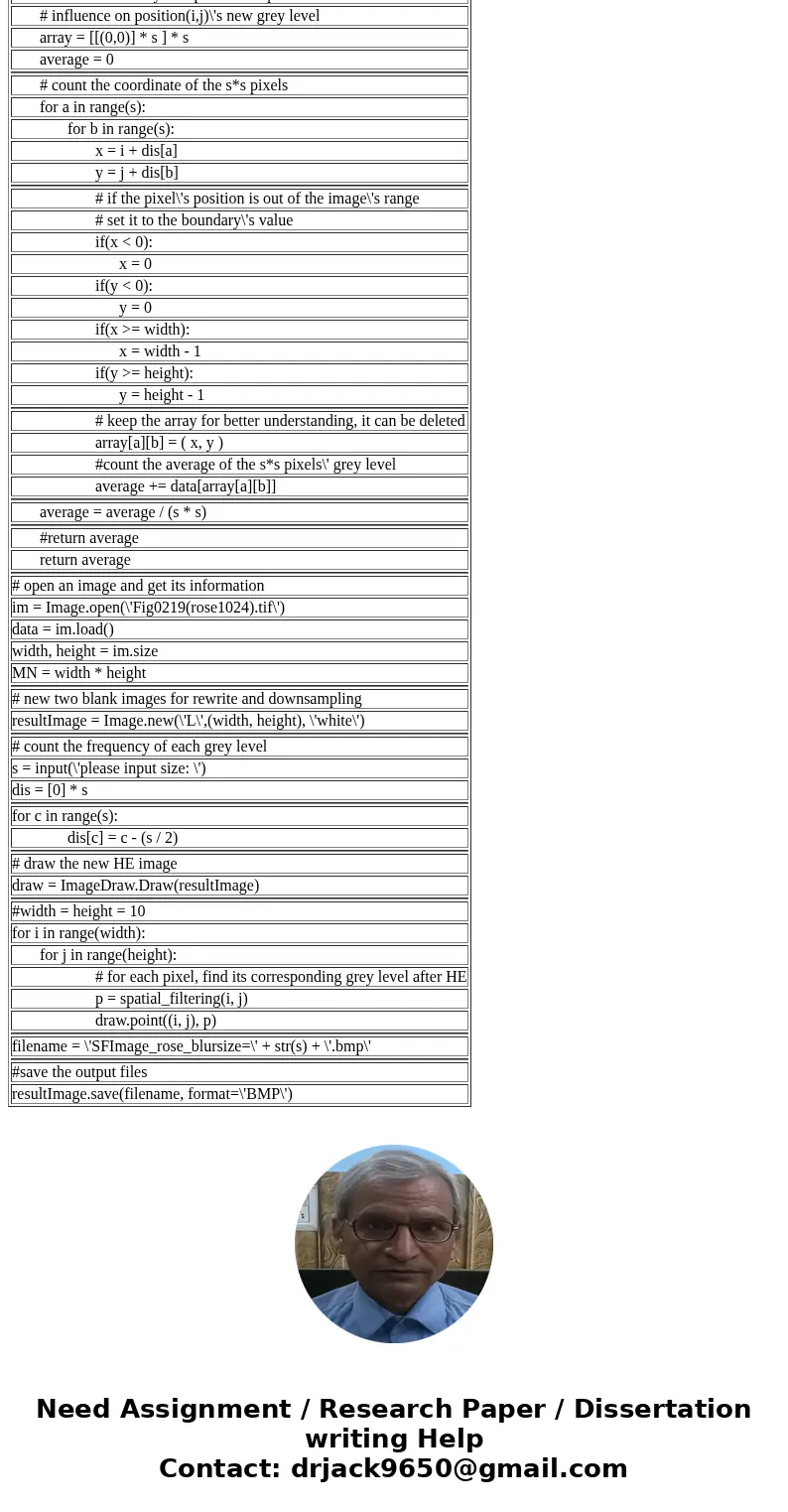Write program to perform spatial filtering of an image You
Write program to perform spatial filtering of an image . You can fix the size of the spatial mask at 3 x 3, but the coefficients need to be variables that can be input into your program.(matlab program)
Solution
def spatial_filtering(i, j):
# create a s*s array to represent the pixels that have
# influence on position(i,j)\'s new grey level
array = [[(0,0)] * s ] * s
average = 0
# count the coordinate of the s*s pixels
for a in range(s):
for b in range(s):
x = i + dis[a]
y = j + dis[b]
# if the pixel\'s position is out of the image\'s range
# set it to the boundary\'s value
if(x < 0):
x = 0
if(y < 0):
y = 0
if(x >= width):
x = width - 1
if(y >= height):
y = height - 1
# keep the array for better understanding, it can be deleted
array[a][b] = ( x, y )
#count the average of the s*s pixels\' grey level
average += data[array[a][b]]
average = average / (s * s)
#return average
return average
# open an image and get its information
im = Image.open(\'Fig0219(rose1024).tif\')
data = im.load()
width, height = im.size
MN = width * height
# new two blank images for rewrite and downsampling
resultImage = Image.new(\'L\',(width, height), \'white\')
# count the frequency of each grey level
s = input(\'please input size: \')
dis = [0] * s
for c in range(s):
dis[c] = c - (s / 2)
# draw the new HE image
draw = ImageDraw.Draw(resultImage)
#width = height = 10
for i in range(width):
for j in range(height):
# for each pixel, find its corresponding grey level after HE
p = spatial_filtering(i, j)
draw.point((i, j), p)
filename = \'SFImage_rose_blursize=\' + str(s) + \'.bmp\'
#save the output files
resultImage.save(filename, format=\'BMP\')
| def spatial_filtering(i, j): |
| # create a s*s array to represent the pixels that have |
| # influence on position(i,j)\'s new grey level |
| array = [[(0,0)] * s ] * s |
| average = 0 |
| # count the coordinate of the s*s pixels |
| for a in range(s): |
| for b in range(s): |
| x = i + dis[a] |
| y = j + dis[b] |
| # if the pixel\'s position is out of the image\'s range |
| # set it to the boundary\'s value |
| if(x < 0): |
| x = 0 |
| if(y < 0): |
| y = 0 |
| if(x >= width): |
| x = width - 1 |
| if(y >= height): |
| y = height - 1 |
| # keep the array for better understanding, it can be deleted |
| array[a][b] = ( x, y ) |
| #count the average of the s*s pixels\' grey level |
| average += data[array[a][b]] |
| average = average / (s * s) |
| #return average |
| return average |
| # open an image and get its information |
| im = Image.open(\'Fig0219(rose1024).tif\') |
| data = im.load() |
| width, height = im.size |
| MN = width * height |
| # new two blank images for rewrite and downsampling |
| resultImage = Image.new(\'L\',(width, height), \'white\') |
| # count the frequency of each grey level |
| s = input(\'please input size: \') |
| dis = [0] * s |
| for c in range(s): |
| dis[c] = c - (s / 2) |
| # draw the new HE image |
| draw = ImageDraw.Draw(resultImage) |
| #width = height = 10 |
| for i in range(width): |
| for j in range(height): |
| # for each pixel, find its corresponding grey level after HE |
| p = spatial_filtering(i, j) |
| draw.point((i, j), p) |
| filename = \'SFImage_rose_blursize=\' + str(s) + \'.bmp\' |
| #save the output files |
| resultImage.save(filename, format=\'BMP\') |



 Homework Sourse
Homework Sourse